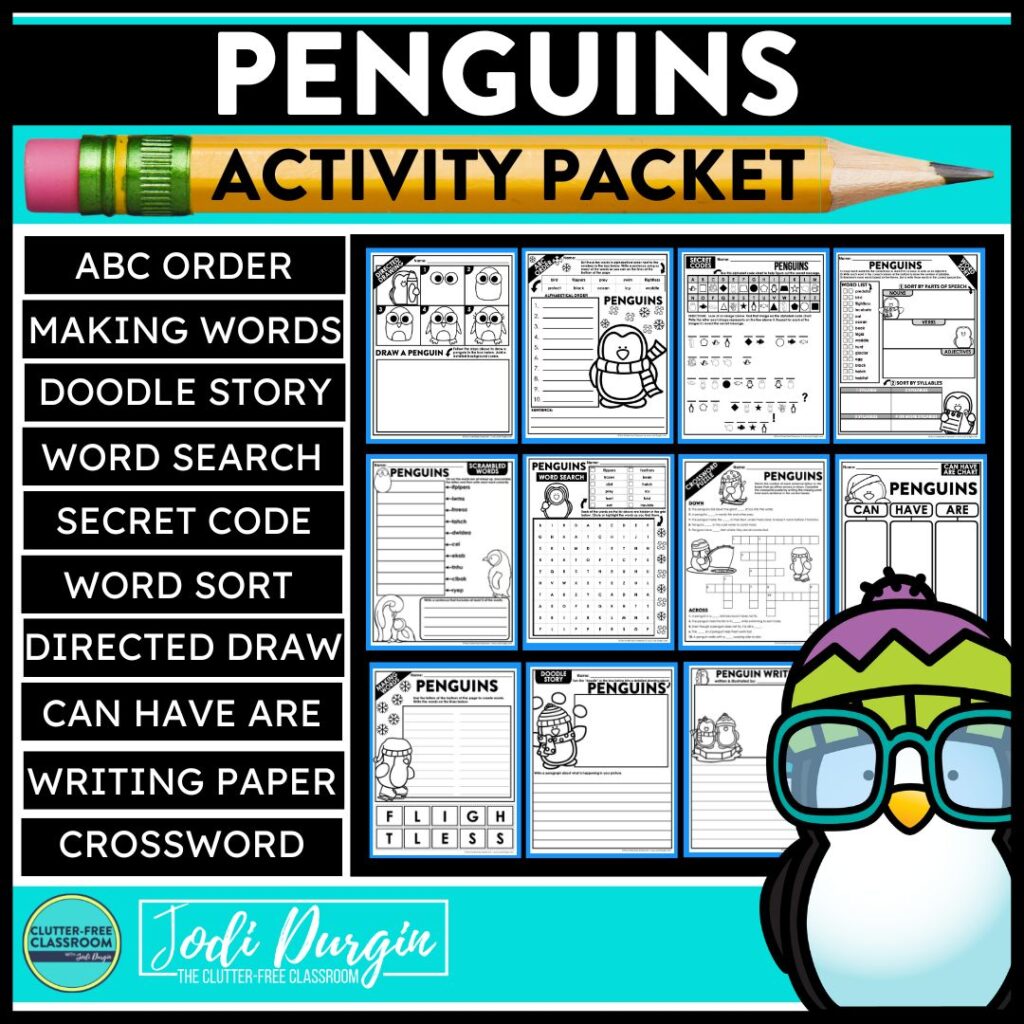Do you want to do something fun with your students, but also academic? Do you need quick print-and-go activities to have on hand? If so, these seasonal activity packets are great resources to have prepped and ready on your desk for whenever you need some engaging activities.
The activity packets are filled with fun and engaging activities students love! Use these activities for centers, homework, fast finisher tasks, filler activities, or indoor recess activities. Learn more about what’s included and why teachers love these activity packets below!
What are the Seasonal Activity Packets?
The seasonal activity packets are a collection of printable worksheets. Each set is based on a specific topic. For example, one of the topics is apples. All of the activities within the apple packet are related to apples (e.g. apple vocabulary). The activity packets shown below are currently available.
September Activity Packets
October Activity Packets
November Activity Packets
December Activity Packets
 |  |  |  |
 |  |  |  |
January Activity Packets
 |  |  |
What is Included in the Activity Packets?
The activity packets include the activities listed below.
ABC Order
In this activity, students sort the list of ten given words in alphabetical order next to the numbers in the box. Then, they’ll write a sentence using as many of the words as they can on the lines at the bottom of the page.
Scrambled Words
Oh no! The 10 words on the page are all mixed up. Students need to unscramble the letters and then write each word correctly. Then, they write a sentence that includes at least 2 of the words.
Making Words
Students use the letters at the bottom of the page to create words. Then, they write the words on the lines.
Doodle Story
Students turn the “doodle” in the box into a detailed drawing. Then, they write a paragraph about what is happening in the picture.
Word Search
The grid has hidden words in it. Students circle or highlight the words as they find them.
Secret Codes
In this activity, students use an alphabet code chart to help figure out the secret message.
Word Sort
Students copy each word into the correct box to show if it is a noun, a verb, or an adjective. Next, they write each word in the correct column at the bottom to show the number of syllables. Finally, they brainstorm more words based on the theme and sort and write those words in the correct spaces too.
Directed Drawing
Students follow the steps to draw a character in the box and then add a detailed background scene.
Writing Stationery
Students can put together a writing piece based on the topic using this paper, which looks great when displayed on a bulletin board.
Can Have Are Chart
Students fill out a can, have, are chart based on what they know or learn about.
Crossword Puzzle
In this activity, students complete the crossword puzzle by writing the missing word from each sentence in the correct boxes.
Why Teachers Love These Activity Packets
Some of the reasons teachers love the activities include:
- The activities require no prep – just print and go!
- Students love these types of activities and will be highly engaged when working on them.
- They are great filler and fast finisher activities, so you’ll be covered in a pinch.
- They complement a larger unit nicely.
- Many of the activities are open-ended so they can be used across grade levels, which means you can continue to use them even if you switch grade levels in the future.
How to Implement the Activity Packets in Your Classroom
Consider printing the packet in its entirety and copy and staple a class set of booklets. By giving the students an entire booklet, they can work at their own pace and learn independence right from day one. Alternatively, you could print select pages and use them individually. Decide what works best for you and your students!
In closing, we hope you find these printable activity packets helpful! If so, you may also be interested in these posts:













